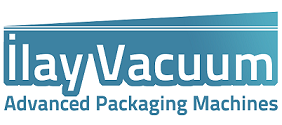What are the functions of food packaging and packaging?
In order to make a correct and healthy packaging, it is necessary to know the functions of packaging and packaging in general. When packing and packaging, physical protection, barrier formation, combination, security, portion control, information transfer should be considered.
Physical protection; The aim is to protect the packaged products from environmental factors. The products that are packaged during physical protection are impact protection, pressure protection, resistance against temperature and weather conditions, protection from bacteria and molds, etc. functions are included. Creating barrier; packaging of oxygen, water, steam, dust, different gases as a barrier to protect against external influences, packaging is one of the basic principles of packaging. In some packaging, different media can be created by means of oxygen absorbers or moisture dryers to ensure long shelf life. Bringing together; It is the process of combining the packages made in small packages under a larger package for easier transport of the food products. The part of the information transfer part of the information such as how the food product should be consumed, the conditions under which it should be protected, the standards of recycling, the date of production, and the date of the last consumption.
For all the problems that may occur during the transportation and for the packaged products whose end-use date is determined, the packaging must be made of high quality and robust. Only in this way can security measures be taken. In addition, a bar code or RFID chip must be available for the safety net to continue in these products.
In order to control the nutritional and energy value of a packaged food product, it is required to have consumed portion information. A standard can be provided for the weight, length and portion of the product during packaging and packaging.
In the light of this information, some machines are needed when packing. These machines are called vacuum packaging machines. These machines, which are preferred by large and small enterprises, play an important role in making life easier.
The Place and Importance of Vacuum Packaging Machines
Vacuum packaging is the process of packing the food inside the packages with the help of machines without touching human hands. Vacuum packaging machines have an important place today. Both being economical, as well as being healthy and saving time and space are used with a lot of reasons.
Products packaged by vacuum packaging machines will be transported to their destination in a much less space and easily transported. For this reason, almost every company is using these machines today and it is making a great progress by facilitating its business.
Price ranges of vacuum packaging machines
Vacuum packaging machines have many types and functions and are manufactured by many companies. The features of these machines can be determined by the products to be used. On many websites, it is possible to see separate prices for these vacuum packaging machines. This is due to the increase or decrease in the functions of these machines. In other words, some machines can pack many different products by vacuum while others can only pack similar products. Thanks to the development of technology, many machines have been produced and the function of these machines has changed as the model changes.
Double-chamber vacuum packaging machine, single-chamber vacuum packaging machine is classified as professional vacuum packaging machine. The price of each of these products is different from each other. Starting from approximately 1 000 rubles, these machines increase up to 25 000 rubles. Some companies that produce these machines do not share their prices. Different prices can be determined by contacting these companies.
To find more suitable vacuum packaging machines, you can get prices from these sites by contacting the websites that sell second hand machines. All the features of the second hand machines should be taken into consideration and the products should be taken from the robust sites, otherwise there may be many undesirable problems.
